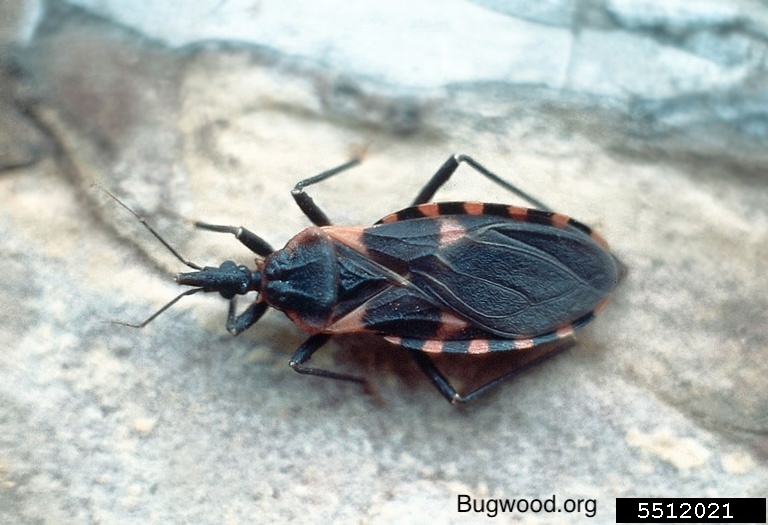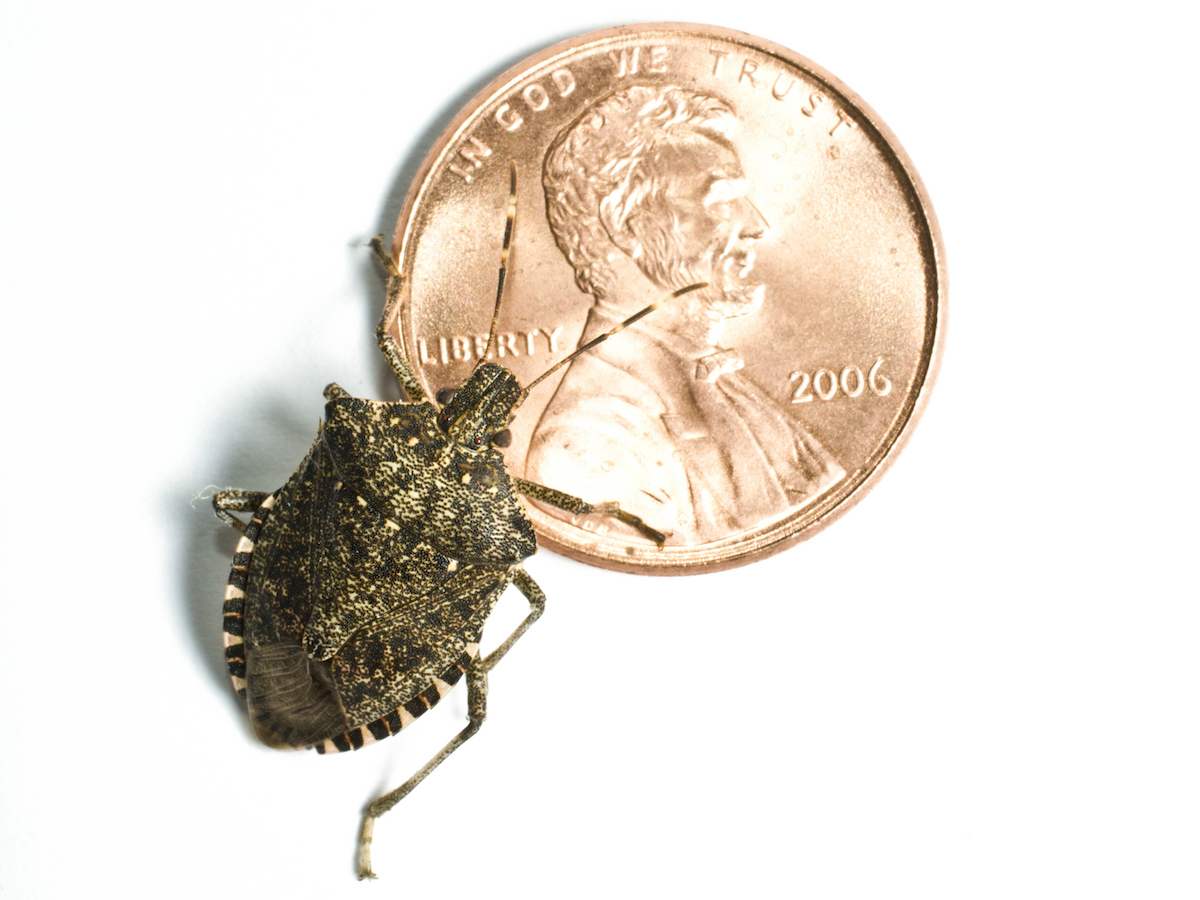Kissing Bugs Triatoma spp.

Identification
Color: Light brown to black; some species have red, yellow or tan markings on the abdomen
Size: Adults ½”-1” (14-24 mm) long
Legs: 6
Antennae: Yes
Shape: Oval and elongated
Region: Various species have been found in the southern United States, Mexico, Central America and South America
What is a Kissing Bug?
Unlike their loving name, kissing bugs are a type of pest called a reduviid bug, known to bite and suck blood from their victim's face (as well as other body parts). They can transmit a potentially deadly disease called Chagas Disease, sometimes known as “kissing bug disease.” Learn more about Chagas Disease.
Kissing bugs are sometimes referred to as:
- Conenose bugs due to their cone-shaped head.
- Triatomine bugs, because they belong to the genus Triatoma.
What do kissing bugs look like?
Kissing bugs are oval and elongated in shape, and tend to be light brown to black, with some species exhibiting red, yellow or tan markings on the abdomen. Their size ranges from ½” to 1” long.
Per the CDC, your chances of contracting Chagas disease from a kissing bug are slim, even if bitten by one that is infected. However, should you begin to experience symptoms, contact your physician immediately for treatment.
Kissing bugs occasionally bite humans in their sleep. People with certain skin sensitivities to the bug's saliva may exhibit signs of allergic reactions, such as itching, swelling, redness, etc., but the kissing bug bites typically do not result in a local reaction.
Kissing bugs also carry the parasite Trypanosoma cruzi in their feces that causes what people often call kissing bug disease, though the real name is Chagas and it is a potentially fatal illness that has afflicted millions around the world, especially in Mexico, Central America and South America.
According to the Centers for Disease Control and Prevention (CDC), nearly 300,000 people in the United States are infected with the parasite. Symptoms of Chagas disease include:
- Fever
- Fatigue
- Body aches
- Headache
- A rash where the parasite entered the body
- Swelling around the eyelids
Encountering infected feces, through an open wound or through the eyes or mouth, can result in Chagas disease transmission. It is common for those who have endured a kissing bug bite to have no recollection of it.
If you notice kissing bugs or kissing bug bites, contact a pest control professional immediately to discuss how to inspect for an infestation and eradicate it through a proper course of pest control.
Various species of kissing bugs are located in the southern United States, Mexico, Central America, and South America.
Primarily a nocturnal pest, kissing bugs hide during the day and feed on the blood of mammals (including humans), birds and reptiles at night. Feeding typically requires 20-30 minutes, during which time they inject an anesthetizing agent in their saliva, similar to that of bed bugs, so the host is not aware that they are experiencing a kissing bug bite. Kissing bugnymphs rely on feeding in order to mature.
Preventing a kissing bug infestation starts with exclusion. Homeowners should seal cracks and crevices with a silicone-based caulk, replace weather stripping and install door sweeps. It is also important to remove debris piles around the yard and store firewood at least 20 feet from the home.
If a kissing bug infestation is suspected, contact a licensed pest professional and consult a medical professional if you are concerned about kissing bug bites.
There are several precautions homeowners can take to prevent exposure to kissing bugs:
- Seal cracks and holes, both indoors and out.
- Replace weather-stripping and repair loose mortar around the basement and windows.
- Ensure there is no gap underneath your door; if you can see light from the exterior under a door, insects can fit through the opening into your home.
- In addition, remove nesting areas and food sources outdoors that can attract nuisance wildlife that could serve as hosts for kissing bugs. Debris piles should be regularly removed from your yard. Firewood should be stored at least 20 feet from your house.
If you suspect a kissing bug infestation, work with a licensed pest control professional to ensure they are properly exterminated. You can find one with the helpful zip code search below.


